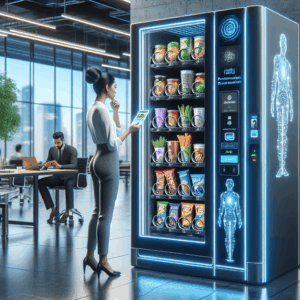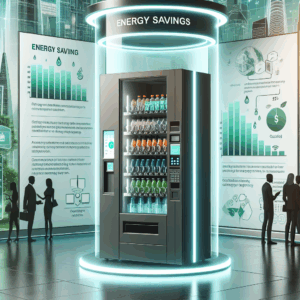1. Location Strategy Matters
The Importance of Prime Spots
When I first started out, I learned real quick how crucial location is for vending machines. It’s kind of like real estate, right? Location, location, location! Placing a machine in high-traffic areas like busy office buildings, schools, or hospitals can quickly boost your sales. These places have a constant stream of people, meaning more potential customers. It’s all about being where the action is.
And don’t just focus on foot traffic. Think about the demographic too. A machine in a gym should cater to health enthusiasts with protein bars and water rather than candy. Tailor your stock to the audience, and you’ll see the dough rolling in.
Also, don’t forget about permissions and permits. Some places require you to get them before setting up shop. These can sometimes be a hassle, but they’re worth it to land that perfect spot.
Evaluating Profitability of Locations
Just because a spot is busy doesn’t mean it’ll be profitable. I’ve learned this the hard way. Sometimes the obvious choices aren’t the best. Evaluate locations by estimating their potential revenue versus any costs related to placing and maintaining the machine there.
I like to track sales for a few weeks. This helps to identify patterns and see if a location is truly gold or fool’s gold. If something isn’t pulling its weight, don’t be scared to move. Testing and learning are key here.
And hey, don’t shy away from unique spots! I’ve got machines in art galleries and community centers, places others might overlook, but they work well for me because there’s lesser competition.
Building Partnerships
I’ve found that partnerships are a game-changer. Forming a good relationship with the location manager or owner can open up more opportunities. They can provide insights into customer preferences and might be more inclined to give you feedback.
I always say those relationships are like planting seeds. Foster them well, and you might even get recommendations for other locations or opportunities to expand your business. You never know where these alliances might lead.
And remember, offer a win-win. If they get something out of the deal, like a share of the profits or bonus services, they’re more likely to hang on to you.
2. Product Selection and Pricing
Understanding Your Customer Base
Knowing your audience is critical when it comes to product selections. I’ve learned people buy what they need, not what you want to sell them. At schools, I ensure healthy snacks are available because parents and school policies often prefer them over junk food.
Regularly monitoring sales patterns can also help refine the selection. If a product isn’t selling, don’t hesitate to swap it out. You’re not a charity; every slot should support itself.
Test new products too. When energy drinks hit the market, I was quick to add them, and they sold like hot-cakes. Keep a pulse on consumer trends and adapt accordingly.
Strategic Pricing Tips
Pricing can be tricky, but I’ve found it’s all about balancing. You’ve got to cover your costs while still making it affordable for the customer. Start with a moderate margin and evaluate. If sales are slow, maybe it’s time to adjust.
Price testing is your friend. Alter prices slightly and observe the impact on volume. Sometimes a small drop can dramatically increase sales, making up for the lower per-unit profit.
And a little secret? Bundled pricing works. Offer discounts for buying two or more items, and watch customers spend a bit more without feeling ripped off. It’s a subtle way to push sales higher.
Product Rotation and Seasonality
Switching out products based on the season can reel in more customers. For instance, during the winter holidays, I stock up on festive candies and during summer, focus on hydration products.
Keeping things fresh by rotating products also prevents boredom. A regular customer might be thrilled to find a surprise new item when they visit. It keeps them coming back for more.
Lean into data. Sales reports will usually tell you what’s resting too long in the machine. Consider refreshing the inventory based on these insights.
3. Maintenance and Upkeep
Scheduled Maintenance Checks
Maintenance is like flossing your teeth; no one likes doing it, but it’s essential. I schedule regular checks to make sure everything’s running smoothly. You don’t want a popular machine to break down, which would be a disaster for both business and customer satisfaction.
Catching potential issues early is key. It’s better to spend a little time repairing a small problem than to ignore it until the machine stops working completely.
Trust me, nothing feels worse than pulling out an error report because you neglected basic maintenance. Keep that toolbox handy and fix issues as they arise.
Cleaning: A Vital Part of the Process
Cleanliness might seem trivial, but it plays a huge role in attracting customers and keeping them loyal. Nobody wants to buy snacks from a grimy machine. A good wipe down and sanitation can go a long way.
A machine that looks clean gives off a vibe of reliability. People associate cleanliness with quality, and quality means repeat business. Make it shine and make more money, that’s my mantra!
Regular cleaning also lets you inspect for possible wear and tear, doubling as a maintenance check. Two birds, one stone.
Investing in Quality
I always believe in quality over quantity. A reliable machine might cost more upfront but saves heaps in terms of repairs and lost sales due to downtime.
While cutting costs on the machine might seem tempting when you’re starting out, remember that you get what you pay for. Many of my headaches early on came from trying to save a few bucks but spending more in repairs.
Think long-term. Investing wisely at the start can save you from future headaches, and you’ll end up with happier customers due to more reliable service.
4. Leveraging Technology for Efficiency
Embracing Digital Payment Solutions
We’re living in a cashless world. A wave to your phone or a quick swipe often replaces jingling coins. Updating machines to accept digital payments has noticeably increased sales for me.
It’s not just about convenience for the customer but also for me. No more coin jams or counting heaps of coins, just direct transfers which mean an easier time managing finances and stock.
And here’s a fun tip: advertise the multiple ways to pay by sticking labels on the machines! People might not notice otherwise and miss the ease of swiping or tapping.
Remote Monitoring Systems
Back in the day, I was always driving out to machines to check stock. Now? I log on to an app and see everything at a glance. Remote monitoring is a game-changer.
These systems notify me about stock levels, transaction logs, and even technical issues. It’s like having eyes on every machine, reducing unnecessary trips and optimizing your time.
This technology can also help with trend analysis, giving you an edge on what to stock based on consumer habits. In a world that values data, you don’t want to be left behind.
Security Upgrades
Protect your machine like it’s your own wallet. I’ve installed cameras on mine for extra peace of mind. Theft and vandalism are risks, but technology can help mitigate them.
Though security systems can be pricey, they save potential loss and headaches down the road. They also offer evidence if something ever does go wrong, helping resolve disputes quicker.
Don’t forget to invest in good locks and consider machine insurance. A broken or tampered machine costs you in terms of repairs and lost sales.
FAQs
What factors should be considered when choosing a vending machine location?
A successful vending machine location benefits from high foot traffic, a fitting demographic, and permissions from location owners. Consider testing the profitability before settling fully.
How should I approach product selection for vending machines?
It’s essential to know your customer base and cater to their preferences. Regularly analyze sales data, experiment with new products, and consider seasonal changes to keep offerings fresh.
Why is maintenance crucial for vending machine operations?
Regular maintenance keeps machines running smoothly and prevents breakdowns. Clean machines also attract more customers, while preventative care can save expensive repairs in the long run.
How can technology improve vending machine efficiency?
Leveraging technology through digital payment solutions and remote monitoring allows for better stock management, enhanced customer convenience, and increased security.



